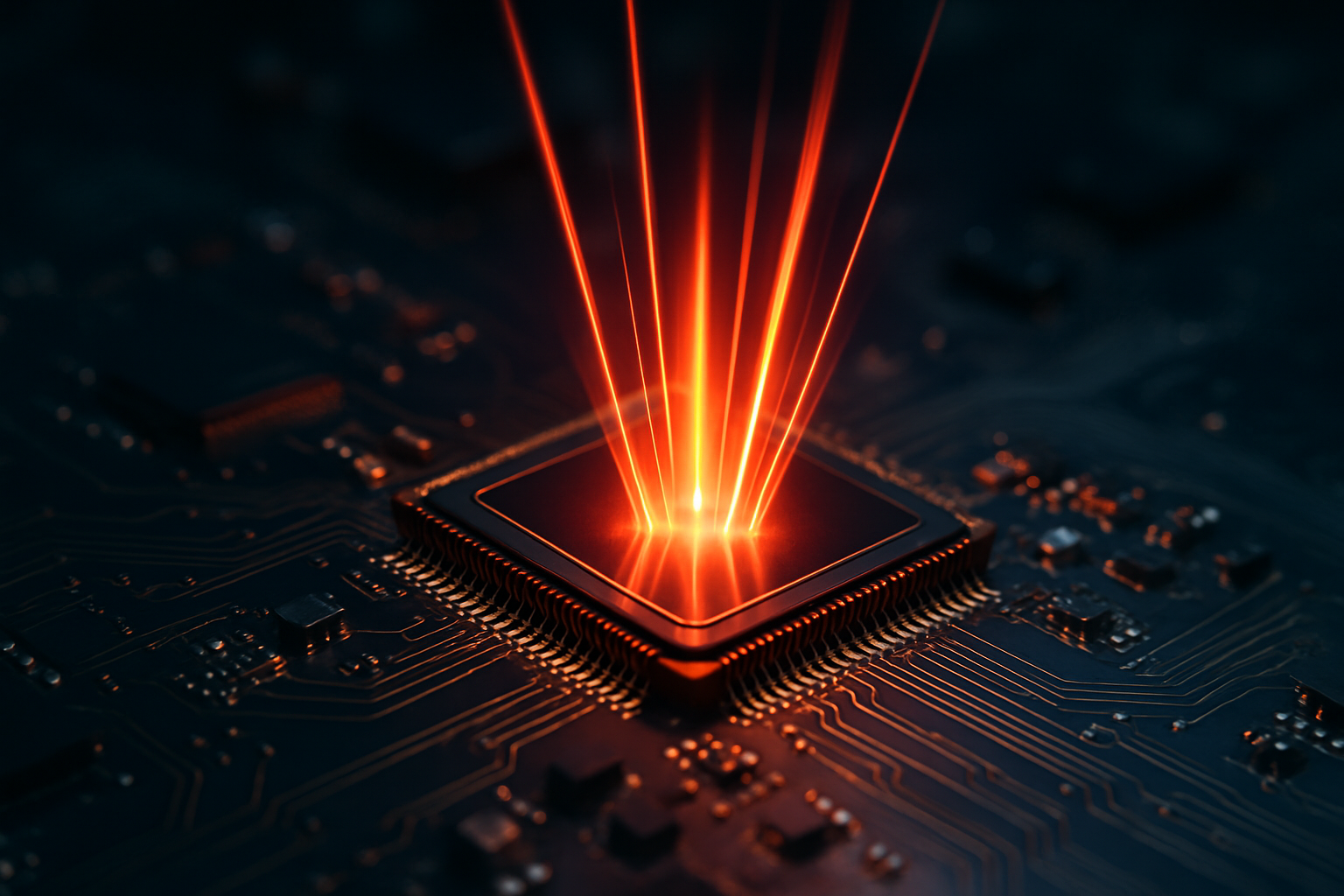Photonic Processors: Light-Speed Computing on the Horizon
In a world where data traffic is exploding and traditional electronic processors are reaching their limits, a new paradigm in computing is emerging. Photonic processors, which use light instead of electricity to perform calculations, promise to revolutionize the speed and efficiency of our computers. This cutting-edge technology could be the key to unlocking unprecedented computational power, transforming everything from data centers to artificial intelligence.

How photonic processors work
At their core, photonic processors use photons – particles of light – instead of electrons to carry and process information. This approach offers several key advantages:
-
Speed: Light travels much faster than electricity, allowing for near-instantaneous data transmission and processing.
-
Energy efficiency: Photonic systems generate less heat and consume less power than their electronic counterparts.
-
Bandwidth: Light-based systems can handle much more data simultaneously, thanks to their ability to use multiple wavelengths.
Researchers are developing various architectures for photonic processors, including optical neural networks that mimic the human brain and programmable photonic circuits that can be reconfigured on the fly.
The potential impact on computing
The advent of photonic processors could lead to a paradigm shift in computing performance. Some potential applications include:
-
Ultra-fast data centers: Photonic processors could dramatically increase the speed and efficiency of data centers, reducing latency and power consumption.
-
Advanced AI and machine learning: The parallel processing capabilities of photonic systems could accelerate complex AI algorithms.
-
Real-time data processing: Industries like autonomous vehicles and financial trading could benefit from near-instantaneous data analysis.
-
Quantum computing integration: Photonic processors could serve as a bridge between classical and quantum computing systems.
Current state of development
While still in the research phase, photonic processors are making rapid progress. Several startups and established tech companies are investing heavily in this technology:
-
Lightmatter: This Boston-based startup has developed a photonic AI accelerator chip that it claims is faster and more energy-efficient than traditional GPUs.
-
Luminous Computing: Backed by Bill Gates, this company is working on building a photonic supercomputer for AI applications.
-
Intel: The tech giant has been researching silicon photonics for years and is incorporating the technology into its data center products.
As of 2023, most photonic processor projects are still in the prototype or early commercialization stages. However, experts predict that we could see the first commercial photonic processors hit the market within the next 5-10 years.
Challenges and limitations
Despite their promise, photonic processors face several hurdles before widespread adoption:
-
Manufacturing complexity: Producing photonic chips at scale requires new fabrication techniques and equipment.
-
Integration with existing systems: Bridging the gap between electronic and photonic systems presents technical challenges.
-
Cost: Currently, photonic components are more expensive than their electronic counterparts.
-
Software ecosystem: New programming paradigms and tools will be needed to fully leverage photonic processors.
The road ahead
As researchers continue to refine photonic processor technology, we can expect to see gradual integration into existing computing systems. Data centers and high-performance computing applications are likely to be early adopters, with consumer devices following later.
The potential impact of photonic processors extends far beyond just faster computers. They could enable new applications in fields like cryptography, weather forecasting, and drug discovery. As we push the boundaries of what’s possible in computing, photonic processors may well be the key to unlocking the next great leap forward in technological progress.
While challenges remain, the future of computing looks bright – quite literally. As we enter this new era of light-speed processing, we may find ourselves on the cusp of a computing revolution that rivals the invention of the transistor in its transformative potential.




